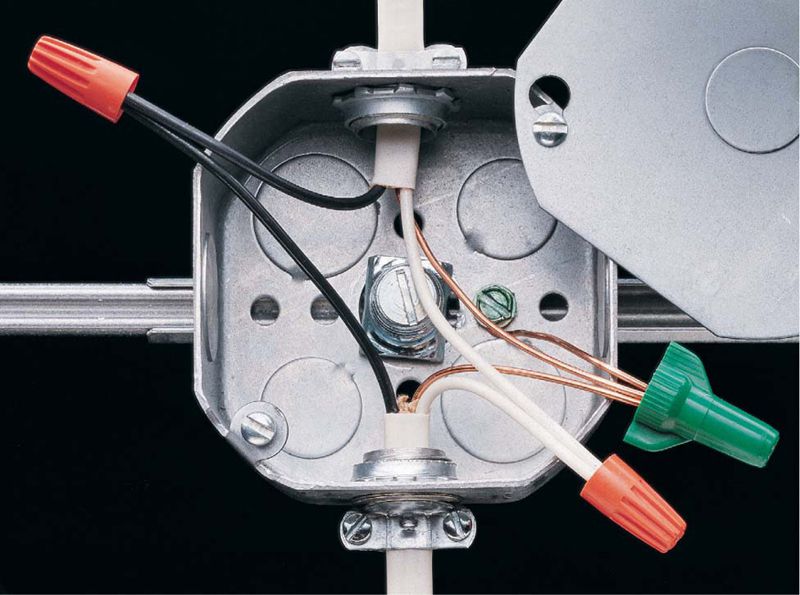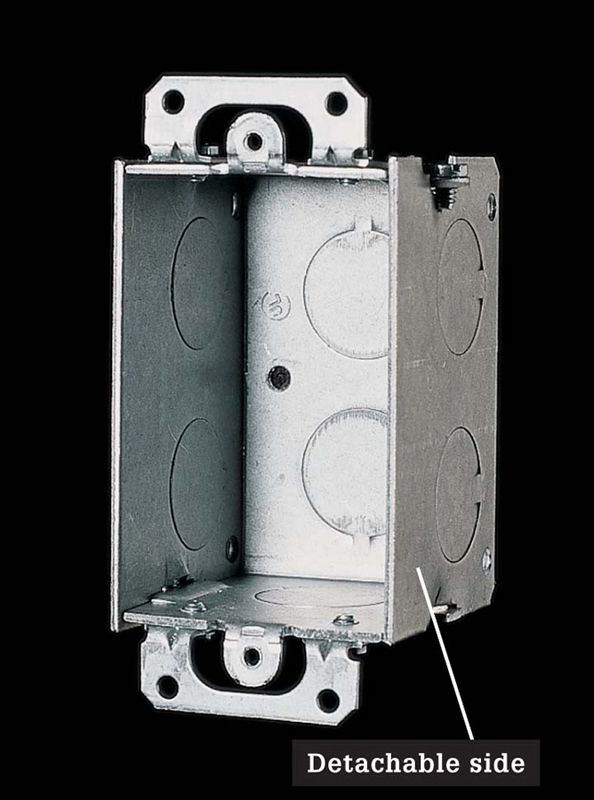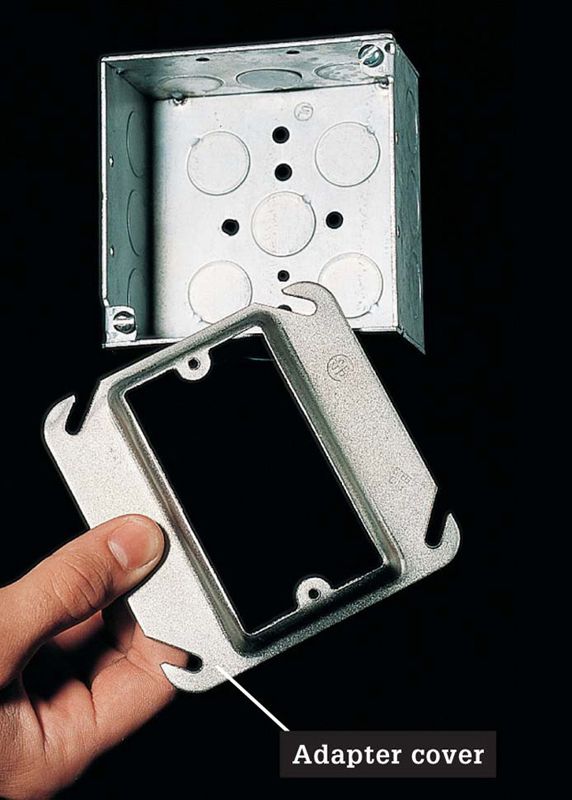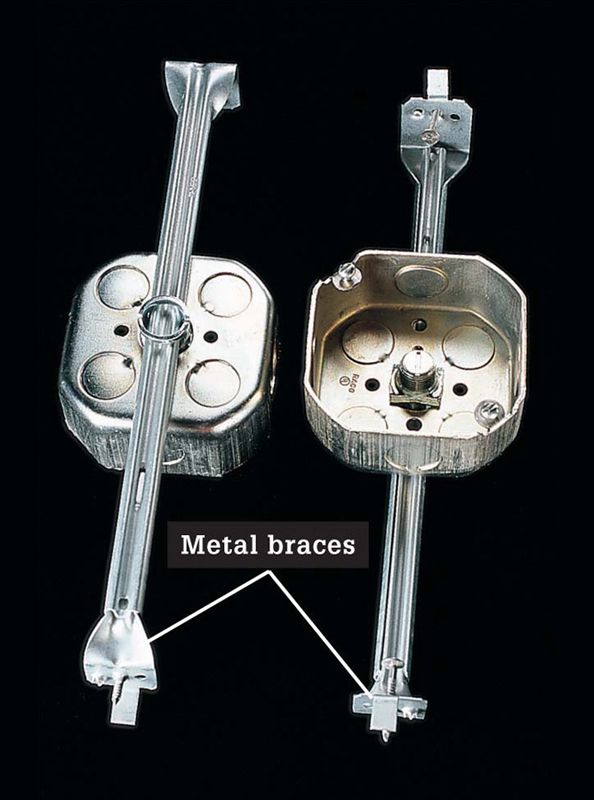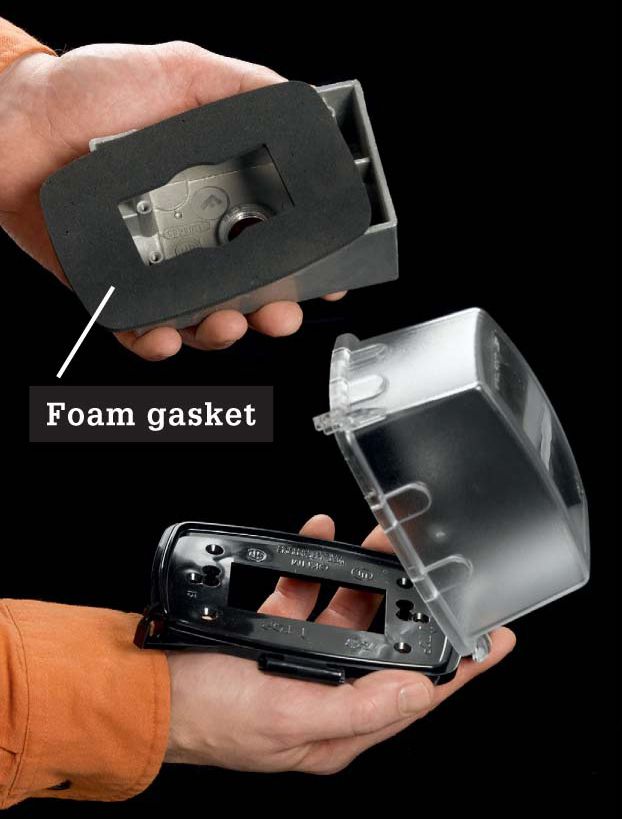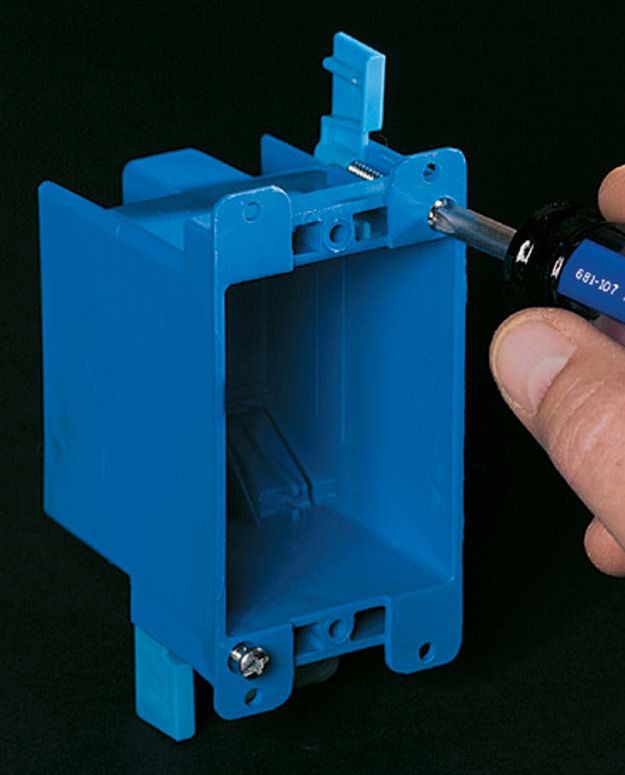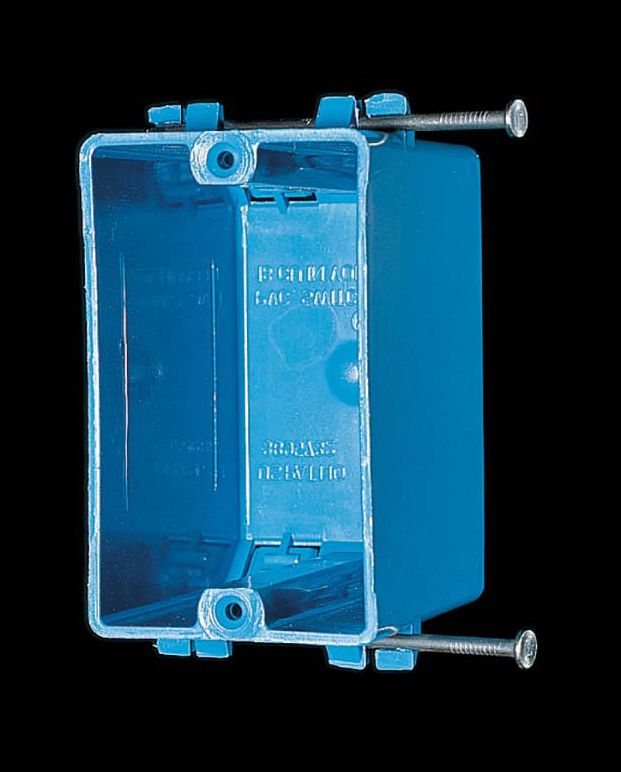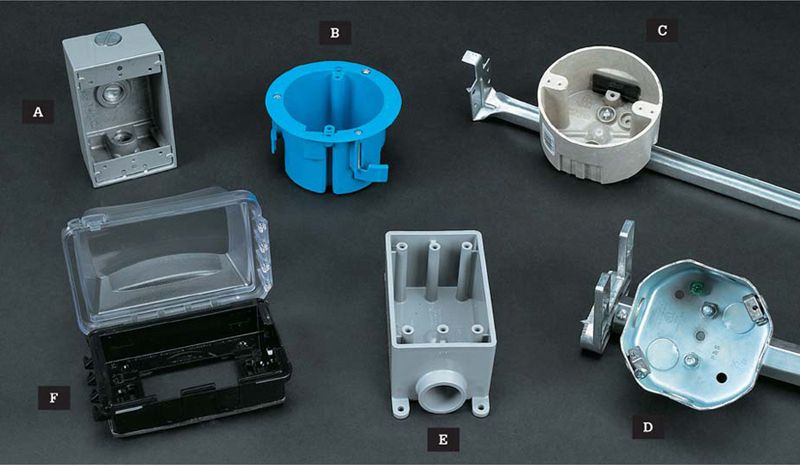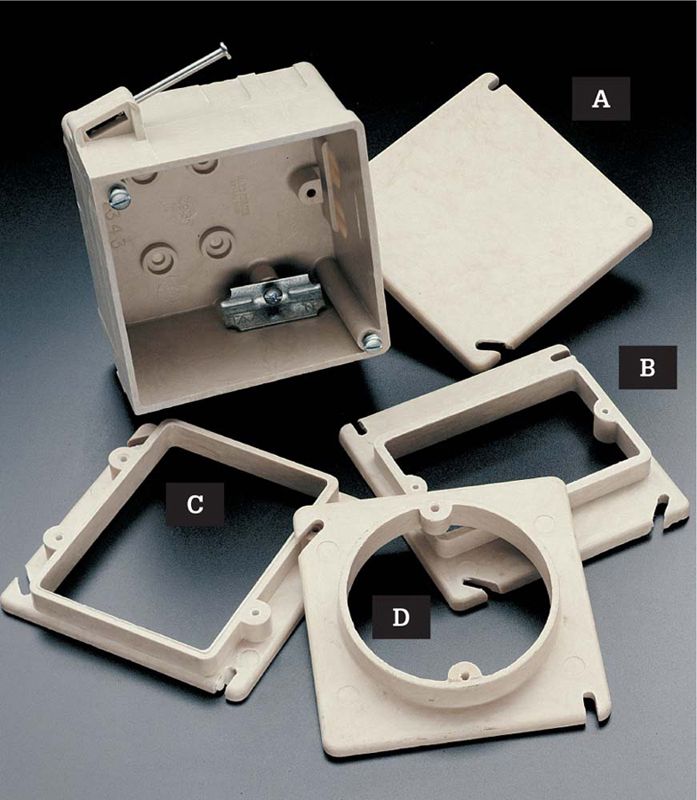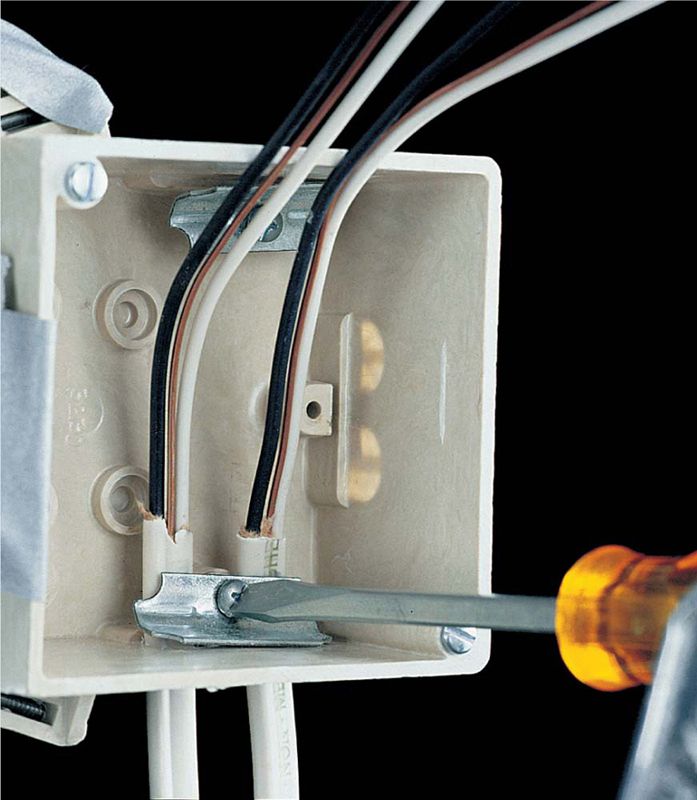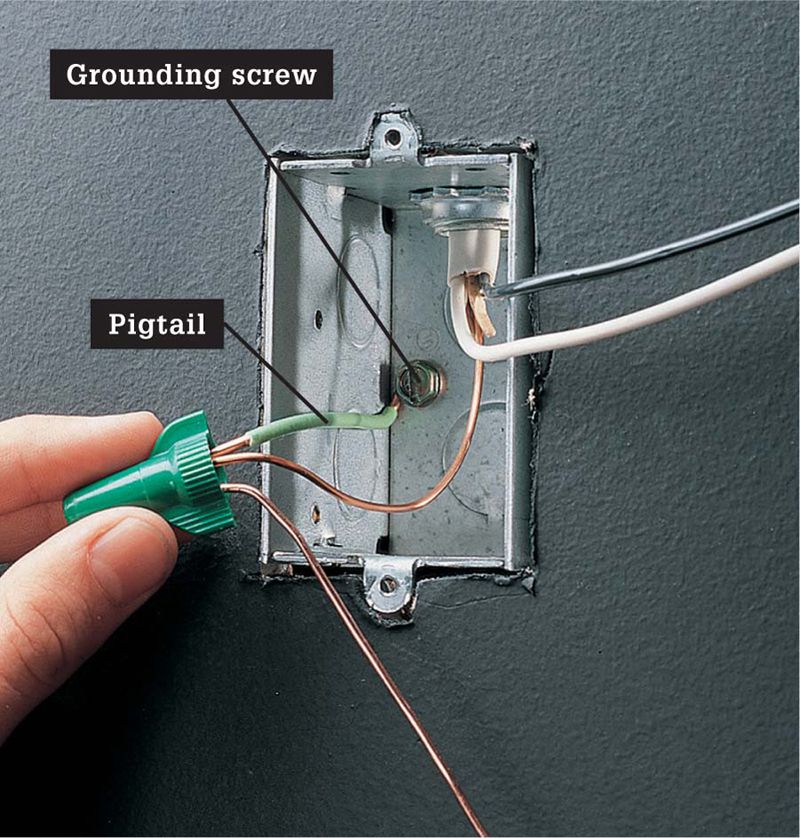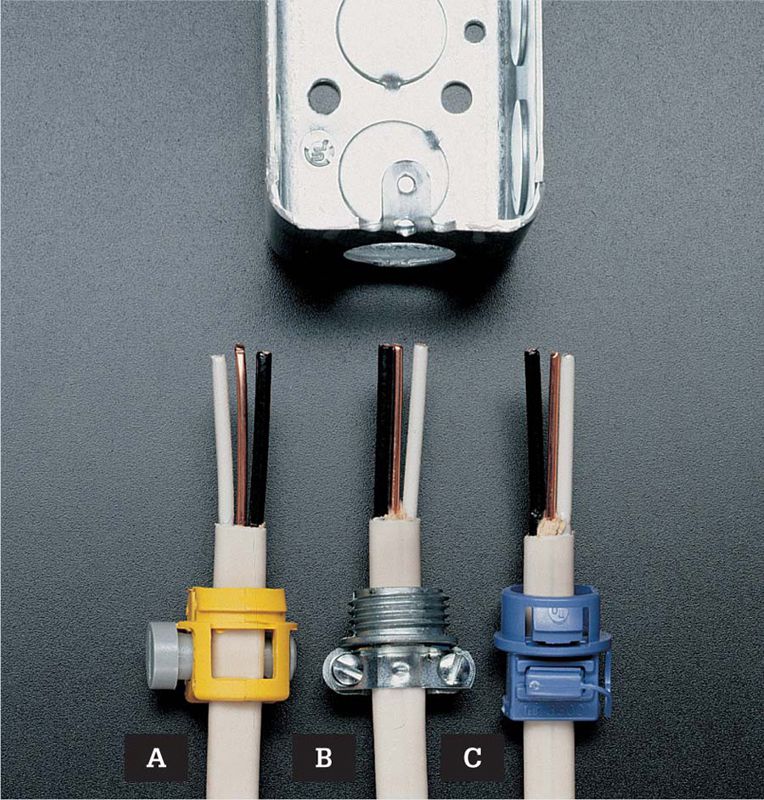WIRING
ELECTRICAL BOXES
The National Electrical Code requires that wire connections and cable splices be contained inside an approved metal or plastic box. This shields framing members and other flammable materials from electrical sparks.
Electrical boxes come in several shapes. Rectangular and square boxes are used for switches and receptacles. Rectangular (2 × 3-inch) boxes are used for single switches or duplex receptacles. Square (4 × 4-inch) boxes are used any time it is convenient for two switches or receptacles to be wired, or “ganged,” in one box, an arrangement common in kitchens or entry hallways. Octagonal electrical boxes contain wire connections for ceiling fixtures.
All electrical boxes are available in different depths. A box must be deep enough so a switch or receptacle can be removed or installed easily without crimping and damaging the circuit wires. Replace an undersized box with a larger box using the Electrical Box Fill Chart (right) as a guide. The NEC also says that all electrical boxes must remain accessible. Never cover an electrical box with drywall, paneling, or wallcoverings.
Octagonal boxes usually contain wire connections for ceiling fixtures. Cables are inserted into the box through knockout openings and are held with cable clamps. Because the ceiling fixture attaches directly to the box, the box should be anchored firmly to a framing member. Often, it is nailed directly to a ceiling joist. However, metal braces are available that allow a box to be mounted between joists or studs. A properly installed octagonal box can support a ceiling fixture weighing up to 35 pounds. Any box must be covered with a tightly fitting cover plate, and the box must not have open knockouts.
 COMMON ELECTRICAL BOXES
COMMON ELECTRICAL BOXES
Rectangular boxes are used with wall switches and duplex receptacles. Single-size rectangular boxes (shown above) may have detachable sides that allow them to be ganged together to form double-size boxes.
Square 4 × 4" boxes are large enough for most wiring applications. They are used for cable splices and ganged receptacles or switches. To install one switch or receptacle in a square box, use an adapter cover.
Braced octagonal boxes fit between ceiling joists. The metal braces extend to fit any joist spacing and are nailed or screwed to framing members.
Outdoor boxes have sealed seams and foam gaskets to guard a switch or receptacle against moisture. Corrosion-resistant coatings protect all metal parts. Code compliant models include a watertight hood.
Retrofit boxes can be installed to upgrade older boxes or to allow you to add new additional receptacles and switches. One type (above) has built-in clamps that tighten against the inside of a wall and hold the box in place.
Plastic boxes are common in new construction. They can be used only with NM (nonmetallic) cable. The box may include preattached nails for anchoring it to framing members. Wall switches must have grounding screws if installed in plastic boxes.
3 1/2"-deep plastic boxes with preattached mounting nails are used for any wiring project protected by finished walls. Common styles include single-gang (A), double-gang (B), and triple-gang (C). Double-gang and triple-gang boxes require internal cable clamps. Metal boxes should be used for exposed indoor wiring, such as conduit installations in an unfinished basement. Metal boxes also can be used for wiring that will be covered by finished walls. Plastic retrofit boxes are used when a new switch or receptacle must fit inside a finished wall. Use internal cable clamps.
Additional electrical boxes include: Cast aluminum box (A) for use with outdoor fixtures, including receptacles that are wired through metal conduit. These must have in-use covers if they house receptacles; retrofit ceiling box (B) used for light fixtures; light-duty ceiling fan box (C) with brace that spans ceiling joists; heavy-duty retrofit ceiling fan box (D) designed for retrofit; PVC box (E) for use with PVC conduit in indoor or outdoor setting; wall-mounted in-use cover (F) for exterior receptacle.
Metal boxes must be grounded to the circuit grounding system. Connect the circuit grounding wires to the box with a green insulated pigtail wire and wire connector (as shown) or with a grounding clip (page 68).
Cables entering a metal box must be clamped. A variety of clamps are available, including plastic clamps (A, C) and threaded metal clamps (B).
